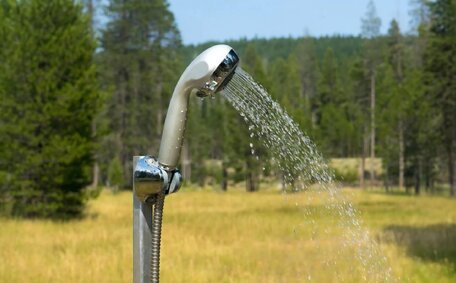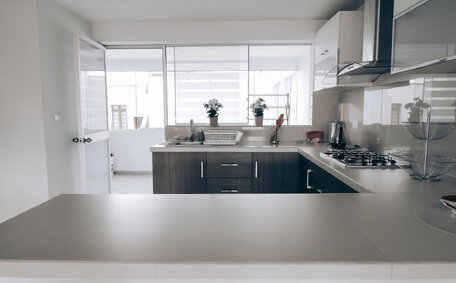Overview of Fire Sprinkler Systems and Relining
Fire sprinkler systems are an essential part of fire safety in commercial and industrial premises, detecting and extinguishing fires quickly through a connected network of pipes and water sources.
Over time, fire sprinkler systems can develop leaks and corrosion, reducing flow efficiency, indicating that your system can benefit from timely maintenance. Rather than replacing an entire system, pipe relining offers a cost-effective way to restore functionality.
Relining involves coating the inside of pipes with epoxy resins or other materials to seal leaks, prevent further corrosion, and smooth internal surfaces. This technique significantly enhances water flow and can add decades to the system’s lifespan.
Steel, concrete, fibreglass, and other sprinkler system infrastructure can be relined. Relining is customised to align with the scale and specifications of the current fire suppression systems.
When performed by certified professionals using quality materials, relining provides building owners with a long-term fire protection solution. Get in touch with us to learn more about getting your fire sprinkler system relined versus going through full replacement.
Common Issues with Fire Sprinkler Systems
Fire sprinkler systems, with numerous components, are prone to malfunction over time. Some common issues include:
- Leaks and water damage from corroded pipes
- Clogged sprinkler heads unable to spray water effectively
- Faulty valves failing to open on demand
- Damaged equipment due to improper maintenance
Such issues compromise the system’s effectiveness and building safety, prompting owners to seek optimal maintenance strategies. Corroded steel pipes are a major concern, as leaks can go undetected, leading to mould and structural issues. All your sprinkler heads must be clear and functional to ensure full coverage.
It’s critical to have fire sprinkler systems inspected and maintained regularly by a certified sprinkler contractor. Annual visual checks and water flow testing can reveal issues before operational failures occur. Systems older than 10 years are particularly susceptible to issues and require extra vigilance.
Don’t take chances with faulty fire suppression infrastructure. For more information, contact us today to learn about inspecting your system or fixing any discovered issues.
Corrosion
Corrosion is one of the most common issues plaguing ageing fire sprinkler systems. Over years of exposure to water and oxygen, components made of steel, iron, and copper slowly erode. This leads to pinhole leaks, rust buildup, restricted flow, and potentially system failure.
As corrosion sets in, fire sprinklers gradually lose the ability to suppress flames effectively. A system breached by leaks can cause additional water damage throughout a building. Rust flakes and tubercles also break free and clog sprinkler heads, compromising coverage.
Building owners should periodically check for early signs of corrosion in their sprinkler systems. These include mineral deposits on pipes, rust-coloured water discharge, and reductions in water pressure. Catching corrosion early allows for relining or section replacements before major operational issues occur.
In cases of advanced corrosion, full sprinkler system replacement may be required. However, relining remains an affordable intermediate option to extend system lifespan an additional 10-15 years. You can also implement corrosion-inhibiting coatings when repairs or replacements happen to enhance longevity.
Don’t let corrosion undermine the efficacy of your fire sprinkler system. As specialists in system reconditioning, we can assess corrosion damage and recommend the optimal solutions to meet your fire protection needs.
Leaks
Leaks are one of the most problematic and dangerous issues that can occur with fire sprinkler systems. Studies show over 30% of systems over 10 years old develop leaks that go unnoticed until catastrophe strikes.
Leaks in a fire sprinkler water tank suggest ongoing pipe corrosion and deterioration, risking significant damage. Small leaks quickly worsen into large ruptures that disable fire suppression capabilities and need repair. Flooding from broken pipes also causes immense water damage, mould growth, and structural decay.
Concrete water tanks are particularly prone to leakage. Cracks could begin to form in the concrete from ground shifting, allowance of rebar corrosion, and freeze-thaw cycles. Undetected, these tiny fissures grow until the tank loses all stored water necessary for fire protection.
Don’t take chances with leaks in your fire sprinkler system. Schedule an inspection today, and we can assess your system’s pipes, sprinkler heads, valves, and water storage for problematic leaks. Catching issues early allows for affordable relining and repairs to get your water infrastructure working like new.
When Pipe Relining is an Appropriate Solution
Pipe relining offers a cost-effective alternative to replacing entire fire sprinkler systems. On average, Relining is about 50% cheaper than a total system overhaul and can restore function for an additional 10-15 years.
Relining is best suited for situations where system components are structurally sound, but corrosion or leaks have been detected. Reconditioning pipes and tanks, as opposed to replacing them, yields significant cost savings while still maintaining safety.
Relining can also serve as preventative maintenance for ageing but still operational systems over 10 years old. Regular application of internal epoxy coatings fortifies system integrity and prevents potential leaks and corrosion. This preserves fire protection capabilities longer before eventual replacement becomes necessary down the road.
In many cases, partial relining of sections with severe corrosion also strikes the right balance between cost and extend system lifespan. Contact us to assess whether your fire sprinkler system components are suitable candidates for relining.
Relining Techniques and Materials
There are several effective techniques and materials utilised to reline and restore fire sprinkler systems.
Epoxy Coatings
Epoxy resins have become the standard for effective structural pipeline rehabilitation. When applied correctly to the interior, these coating systems halt existing corrosion and prevent future decay, which is why sprinkler tanks need regular inspection.
Advanced epoxy products like NuFlow 7000 provide superior adhesion, penetration, and flexibility. Once set, the inert lining becomes highly durable, fire-resistant, and significantly improves water flow via smoother pathways.
Importance of Safe, Certified Materials
All epoxy linings and other materials used in the relining process must hold certifications from reputable standards organisations:
- ICC-ES (International Code Council)
- ASTM International
- ANSI/AWWA for potable/drinking water system compliance
These certifications guarantee compliance with strict health and safety regulations, ensuring materials are suitable for fire sprinkler system rehabilitation.
Our technicians use only top-quality epoxy applications and equipment, rigorously tested for reliability. This ensures compliance with safety standards and provides building owners with peace of mind.
Applicable Fire Sprinkler Systems for Relining
Steel
Steel is predominantly used for fire sprinkler system pipes and supporting structures. As steel corrodes over time when exposed to water, leaks and flow restrictions eventually occur. Relining ageing steel components with epoxy coatings is an extremely effective reconditioning method.
The epoxy seals leaks and creates a barrier against further corrosion, maintaining the system’s integrity. Relining reinstates water flow rates to their original design specifications. Relining steel sectional systems on-site negates the necessity for complete replacement.
Concrete
Over years of freeze/thaw cycles and ground shifting, small cracks and leaks can form in concrete tanks and pipes. Water leaks from concrete fire sprinkler systems can compromise the structural integrity of a building.
Sealing cracks in concrete with specialized liquid epoxy resins stabilizes the structure and prevents leaks. The seamless epoxy barrier stops leaks and strengthens compromised sections, allowing concrete tanks and pipes to meet operational demands safely.
FRP/GRP
FRP (fibreglass-reinforced plastic) and GRP (glass-reinforced plastic) are lighter, non-corrodible alternatives for fire sprinkler piping where harsh environmental conditions exist. Nonetheless, joints in these materials may develop leaks over time.
Applying durable epoxy linings to FRP/GRP sprinkler components efficiently seals leaks at joints. This restores watertight infrastructure integrity to protect against further damage.
Our expert technicians can diagnose issues in fire sprinkler systems made from all materials. We then develop custom relining solutions using certified epoxy products and methods tailored to your unique infrastructure. Contact us today to assess your system!
Extending System Lifespan Through Relining
Relining fire sprinkler systems is one of the most effective ways to extend operational lifespan without undergoing full replacement. The process coats ageing steel, concrete, and GRP components with liquid epoxy resins that seal leaks, halt corrosion, and provide durable protection against future decay.
Relining damaged infrastructure, rather than full system replacement, offers building owners notable cost savings and maintains safety standards, ensuring tanks receive detailed care. The seamless epoxy barrier improves flow efficiency dramatically, meeting or exceeding the original system’s design specifications for 10-15 more years.
As certified specialists, we exclusively utilise industry-approved epoxy products and methods tailored to your unique setup. Our expertise guarantees effective reinforcement of system integrity with our coating process. We support our refurbishment work with a solid 10-year guarantee.
Don’t wait for your fire sprinkler system to fail beyond repair. Effectively prolong its service life with our professional relining services. Contact us today to assess your system and learn about our solutions for preventing leaks, stopping corrosion, and improving functionality.






